How to Make Over-Easy Eggs (Even In Stainless Steel Pans!)
Learn how to make perfect over-easy eggs with crispy or smooth edges, tender whites, and a runny yolk. Whether you’re cooking just one egg or a batch to top your favorite rice bowls, breakfast hash, or avocado toast, this step-by-step method will give you confidence so there’s no more guessing or uninvited hard yolks and scrambled messes.
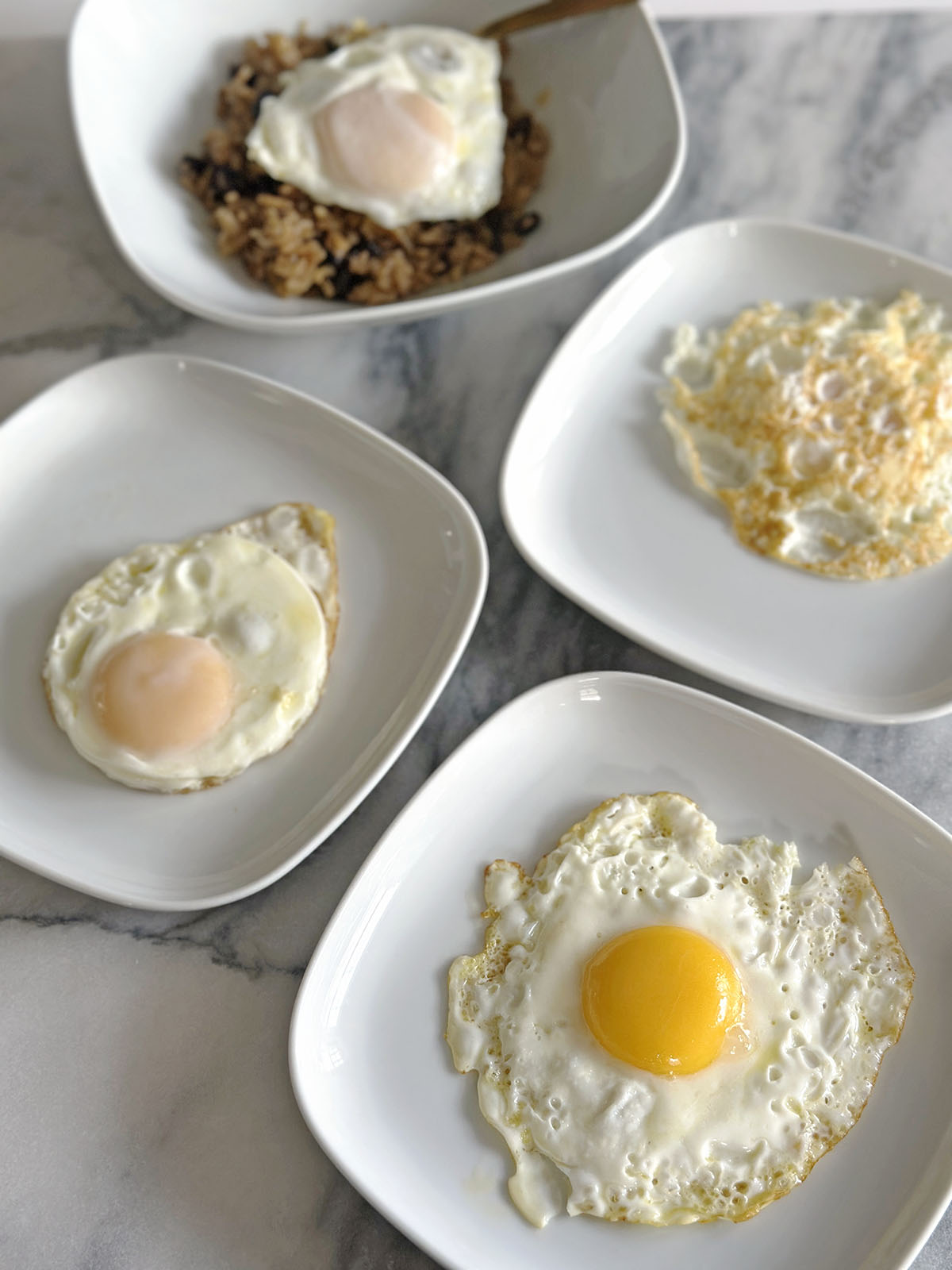
Don’t forget to pin these over-easy egg tips for later!
Yes, You Can Make and Love Over-Easy Eggs (Even in Stainless Steel!)
I know—runny yolks aren’t for everyone. I spent my first 35 years doing everything possible to avoid them. But something changed, and now? I can’t make or eat a rice bowl or hash without thinking—this would be so good with an over-easy egg on top!
Whether you’re already on the over-easy train or just curious, this method for how to make an over-easy egg is for you. It’s simple and fast, and it works—even in my chosen stainless steel pans.
I don’t know what came first, the skill or the taste for this egg prep, but now I confidently love them both. Keep reading; I’ll show ya!

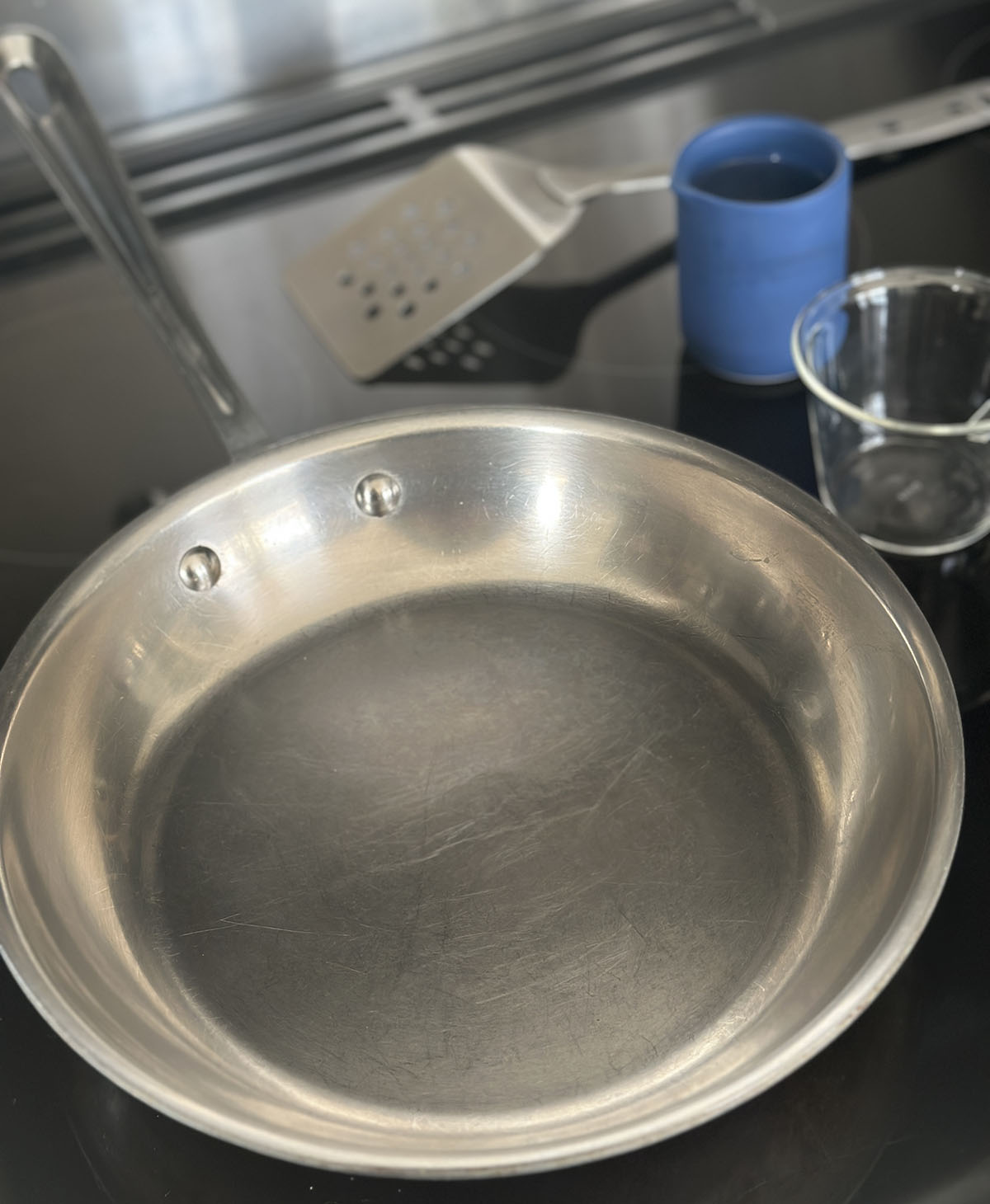
How to Make Over-Easy Eggs in 4 Easy Steps:
Ready to master over-easy eggs? Whether you flip, steam, or want that perfectly runny yolk, here are my four easy steps—with tips to help you along the way.
P.S. Want to feel more at home in your kitchen? My Make It Homemade course teaches you the simple skills (like mastering eggs!) that make cooking feel doable—and even fun. Six lessons, tons of tips, no stress.
Step #1: Warm the Pan, Add Fat
Heat your pan over medium-low. Add butter, ghee, or oil and let it melt fully—hot, but not smoking.
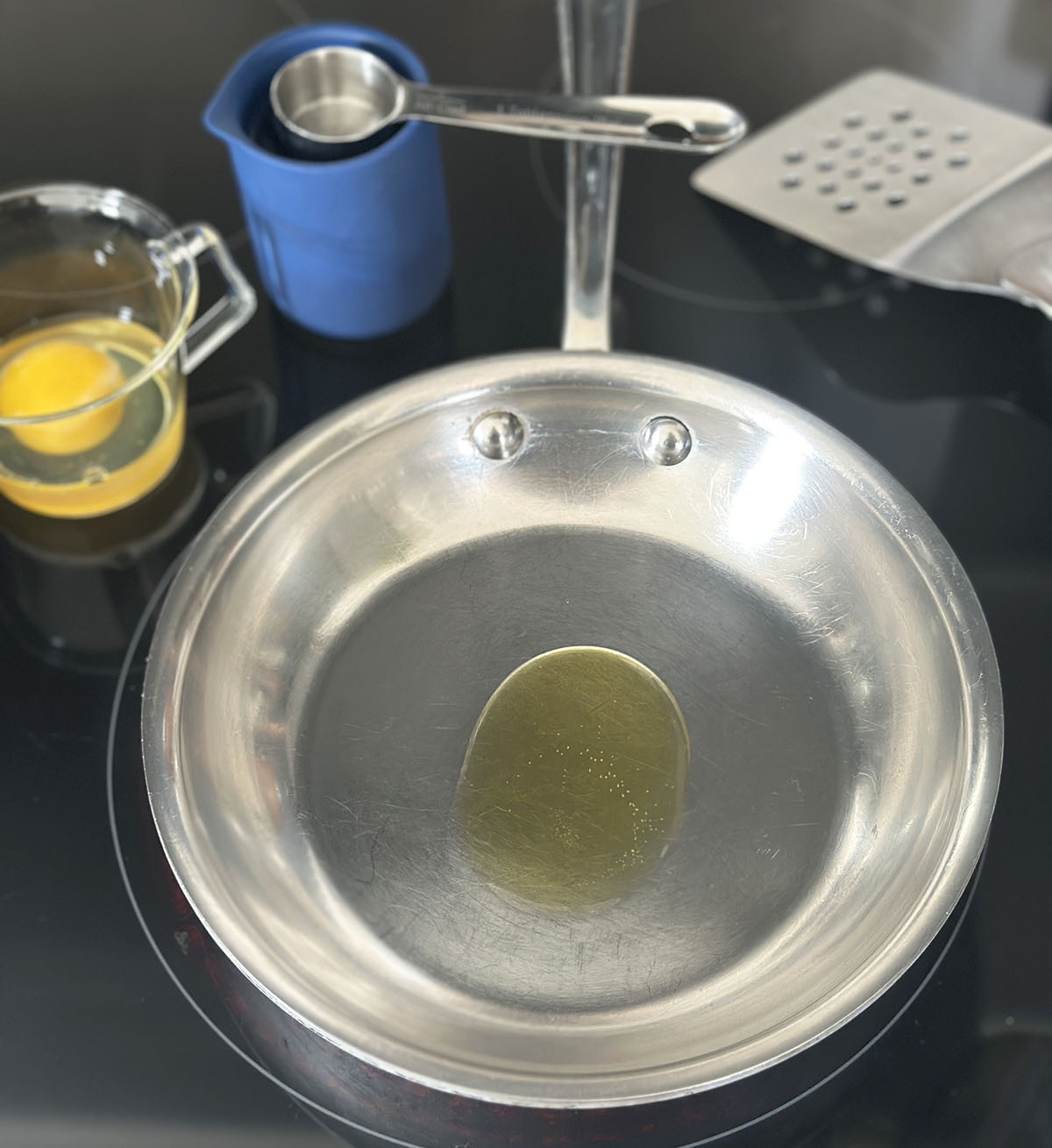
Tip
Heating your pan: I heat my stainless steel all-clad pans for at least 1-2 minutes on medium-high to high heat. I then turn my pan down to medium heat when I add my fat. (I want my pans hot enough so the fat melts quickly but not so hot that it smokes and sputters.) Once the fat melts and moves quickly, your pan is ready. Practicing with your pan will help you learn how long this process takes. See recipe notes for tips when using different pans.
Step #2: Crack and Cook (Gently)
Crack your egg in a cup or prep dish and add to the pan. Cook uncovered until whites are almost set and turn opaque.
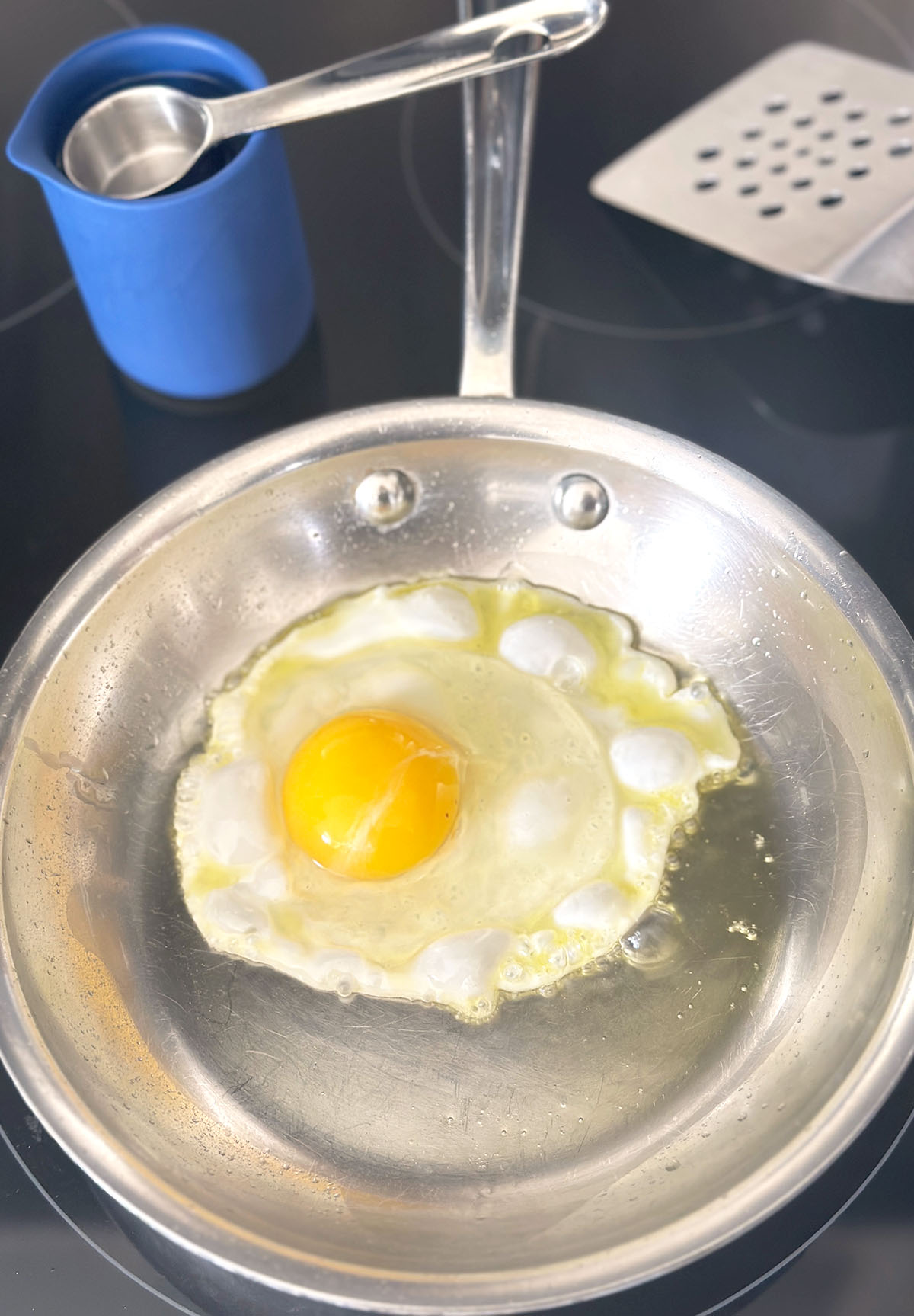
Step #3: Add Water, Cover!
Splash one tablespoon of water around each egg. As soon as the steam rises, cover and set the timer for one minute.

Step #4: Uncover and Remove Egg
Immediately uncover! Your egg white should be set, but the yolk should be soft inside a thin white covering. With a spatula, gently ease the edges and swiftly remove the egg to plate or to top your prepared food.

Tip
Note on spatulas: A sharp metal spatula on stainless steel pans works best for removing a cooked egg. See the recipe for stuck egg tricks!
Speaking from Experience:
How to Wreck Over-Easy Eggs
Eggs are just the beginning. Want six lessons full of skills that make homemade cooking easier? You’ll love Make It Homemade.
How to Make Over-Easy Eggs (Even In Stainless Steel Pans!)

Ingredients
- 1 egg —This method works for one egg or a few at a time—just be sure your pan has enough space, enough oil, and that you add water for each egg
- 1 tablespoon water, have a small cup of water ready
- 1 tablespoon oil or clarified butter
Instructions
- Set out all your tools and ingredients before you begin: water to splash, lid to cover the pan, spatula, oil or clarified butter/ghee, and a plate to set your cooked egg on.
- Heat your dry stainless steel pan over medium-high for 30–60 seconds. Then add fat and heat again until the oil or ghee moves quickly across the surface or a sprinkle of water sizzles.
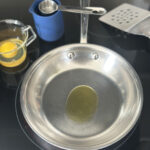
- First, crack your egg into a small dish. Then, gently pour it into the hot pan.

- Right after the egg hits the pan, turn the heat to medium. Let the egg cook just until the translucent egg white turns opaque.
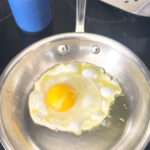
- Splash a tablespoon of water per egg over and around each egg.
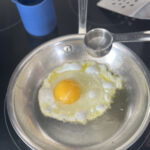
- Immediately cover your pan with a lid and set a time for 1 minute to steam.
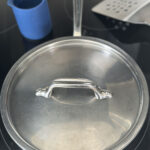
- When your minute is up, remove your egg from the pan immediately so it doesn’t cook further.

Recipe Tips:
- More eggs at once? Add a bit more oil and a 1/2 tablespoon of water for each additional egg.
- If the egg sticks to the pan, splash a little more water around the edges and release with a thin, firm spatula.
Want a Perfectly Round Steamed Egg?
- After your oil or butter is heated, set down a mason jar lid and pour the cracked egg in the round form.
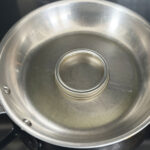
- Finish with water and lid.
- Remember when you remove the lid that this mason jar lid ring is hot, use a fork or tongs to remove it.
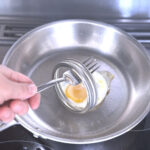
- Cut the extra white off if you want a neater circle, or leave it rustic for a homemade look.
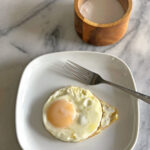
Want a Sunny-Side-Up Egg with a Runny Yolk?
- Crack your egg directly into a small dish, keeping the yolk intact and in half of a shell. When your pan is ready (hot and oil warmed), gently pour the egg whites only into the pan.
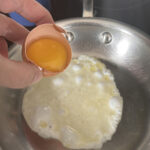
- Cook uncovered for 30–60 seconds until the white starts to set around the edges.
- Place the yolk in the center of your opaque egg whites, and proceed with the one tablespoon of water from the steps above.
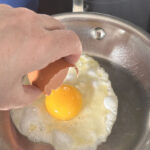
- Steam for 30 seconds with the lid on, then remove the lid and cook for about a minute, depending on how set you want the egg yolk to be.
- Uncover and gently remove the egg when the white is set, and the yolk is still glossy and runny.
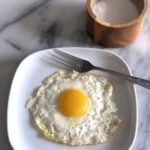
Want a Flipped Over-Easy Egg?
- Follow any of the egg preps above until it's time to remove your egg from the pan.
- Lift your egg with a spatula, splash more water or oil in the pan if dry, flip the egg gently, and cook 30 seconds to 1 minute for runny yolks—or longer for medium or hard yolks.
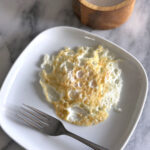
Equipment

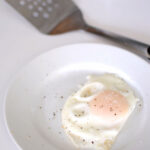
This post contains affiliate links to products I know and love. I recommend any of them for this recipe!
Notes
Nutrition
Our Favorites
What to Put Under That Egg


Choosing the Right Pan for Over-Easy Eggs
All pans are not created equal! As a personal chef and home cook who has tried many options, this is what I recommend:
Stainless Steel All-Clad: I use All-Clad D5 Stainless Steel Pans for everything. I’ve owned them for over twenty years, and they perform just as well today as they did when they were new. Once properly heated, stainless steel creates a natural nonstick surface when combined with fat—perfect for all my egg preps. I love them. (This All-Clad pan with a lid is an excellent size for eggs!)
Ceramic: I also have this ceramic-clad pan in the picture below that I occasionally use for eggs. If you’re using a ceramic pan, don’t preheat it dry or on high heat. Add oil to a cold pan first, then heat oil and pan together, low and slow. Ceramic coatings are more delicate than stainless, and heating them too fast or too hot can cause damage over time + ruin eggs quickly. (See my pic above for how I wrecked eggs in a too-hot ceramic pan!) Because ceramic heats and releases differently, your timing for heating the pan and cooking eggs will vary from my recipe above, so keep a close eye on it while cooking and experimenting.
Cast Iron: I don’t recommend cast iron for over-easy eggs. Even well-seasoned cast iron tends to grip delicate foods like eggs unless it’s extremely well-maintained and preheated. Cast iron retains a lot of heat, which can quickly overcook and brown eggs.
Nonstick: Nonstick pans absolutely work for over-easy eggs—and many people love them for this—but I don’t use any nonstick these days. I prefer to avoid worrying about nonstick coatings wearing out or flaking over time.
Get My Meal Prep Guide For FREE!
When you subscribe to my weekly newsletter, you’ll get the top 3 meal prep recipes anyone can make, plus tips and ideas for making cooking fun and doable.
More Ways To Cook Eggs Your Way
How would you like your eggs? Boiled, scrambled, or broiled? I do them all in my stainless steel pans.
Last Updated on April 9, 2025 by Heather Bursch




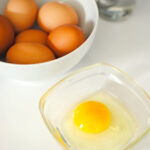
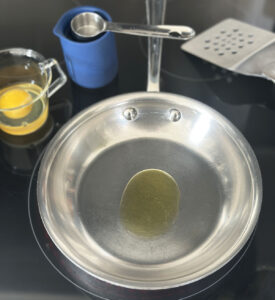
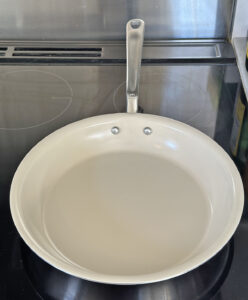
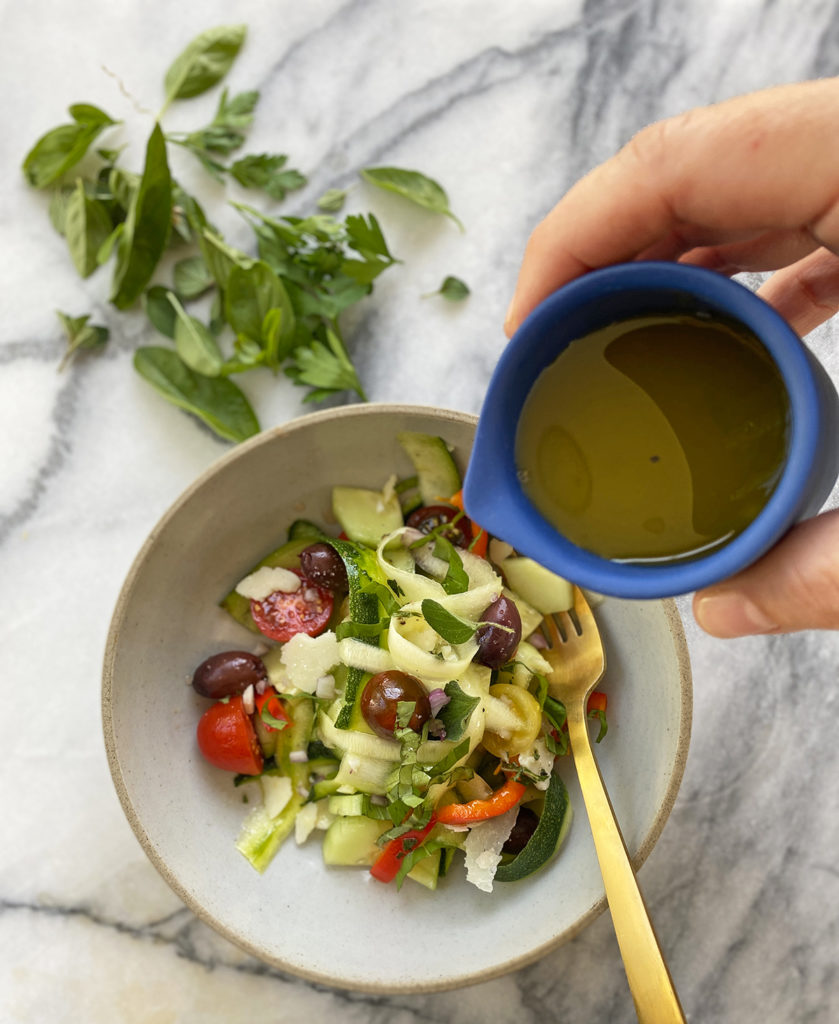

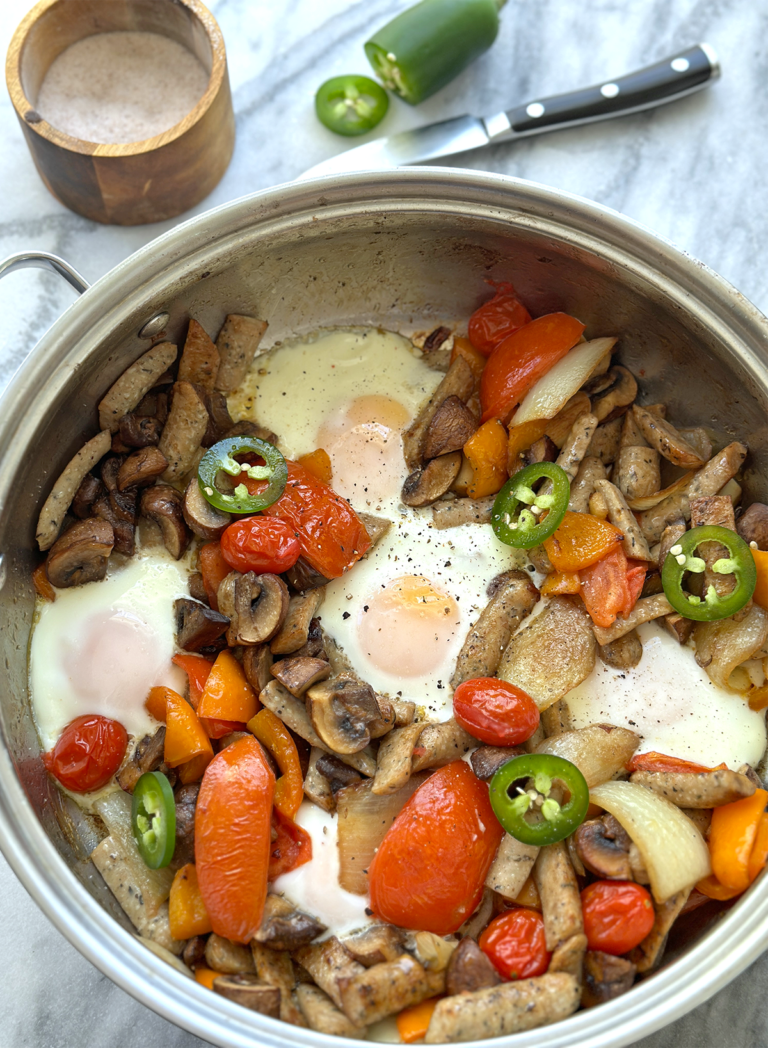
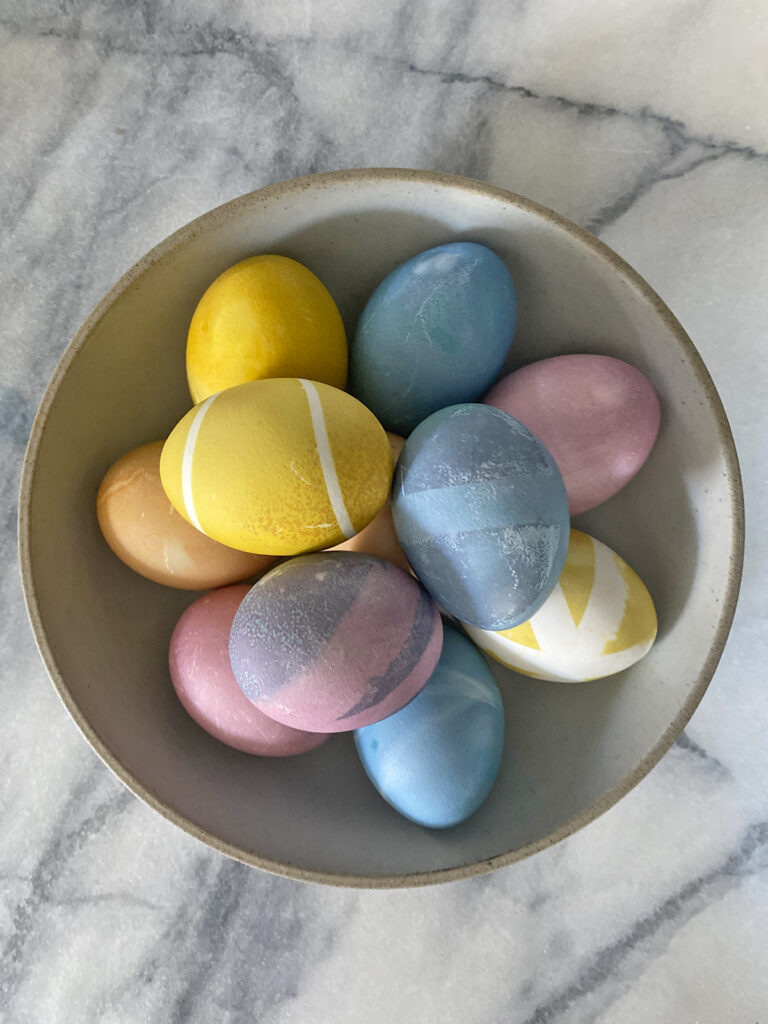


I love this and I love you! Thanks for breaking it down. As much as I love eating them, I still haven’t gotten this right. We have long been calling these “prefect eggs” but only Ben can currently make them. My turn to learn!
It seriously took me so long to just “lock this down” as you would say. 😉 And many thanks to you, had you never introduced me to our beloved noodle dish, I would not have opened my eyes to the over-easy egg. Love ya!